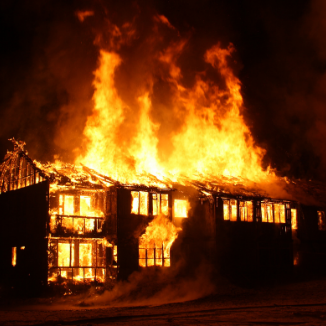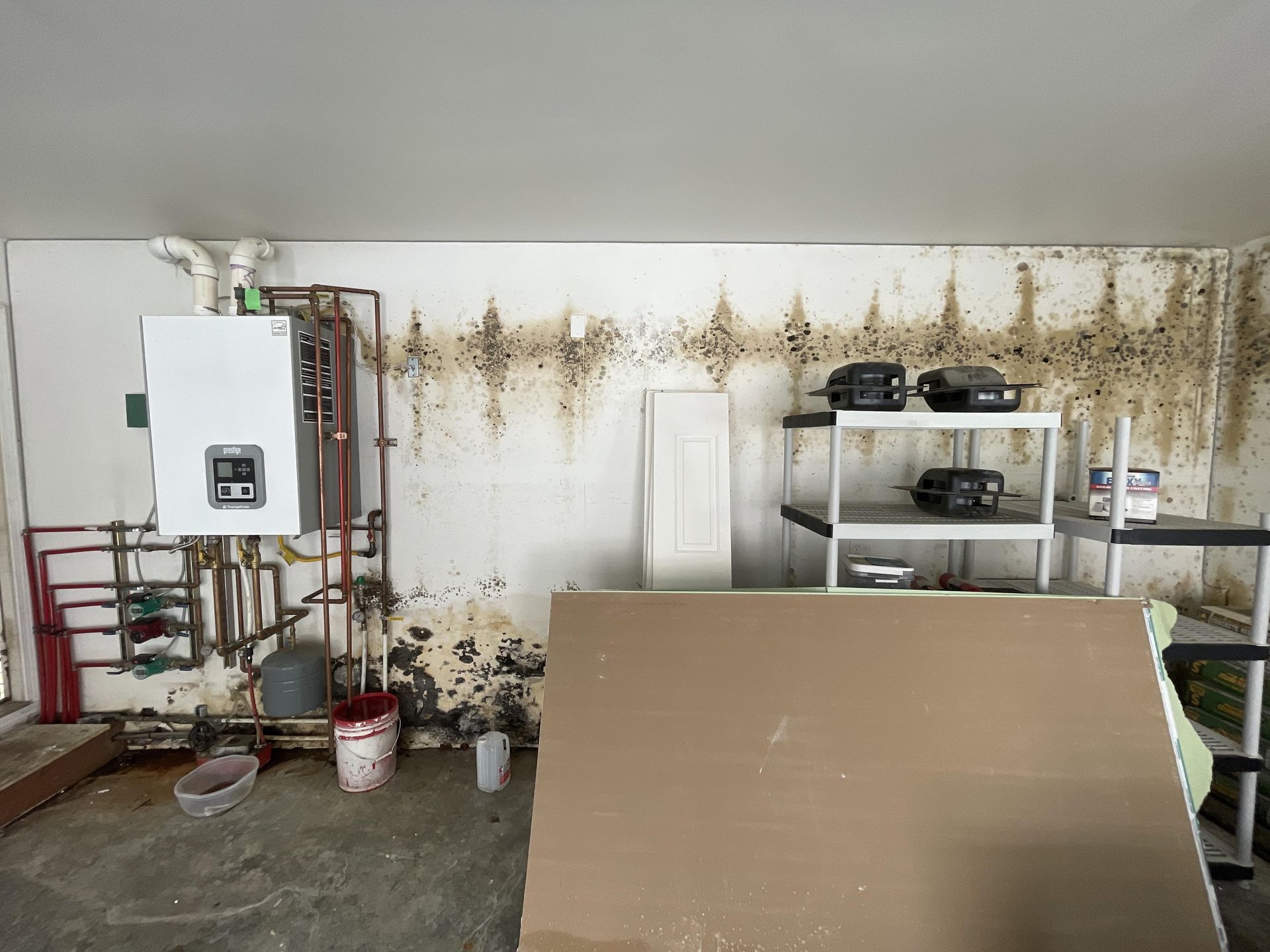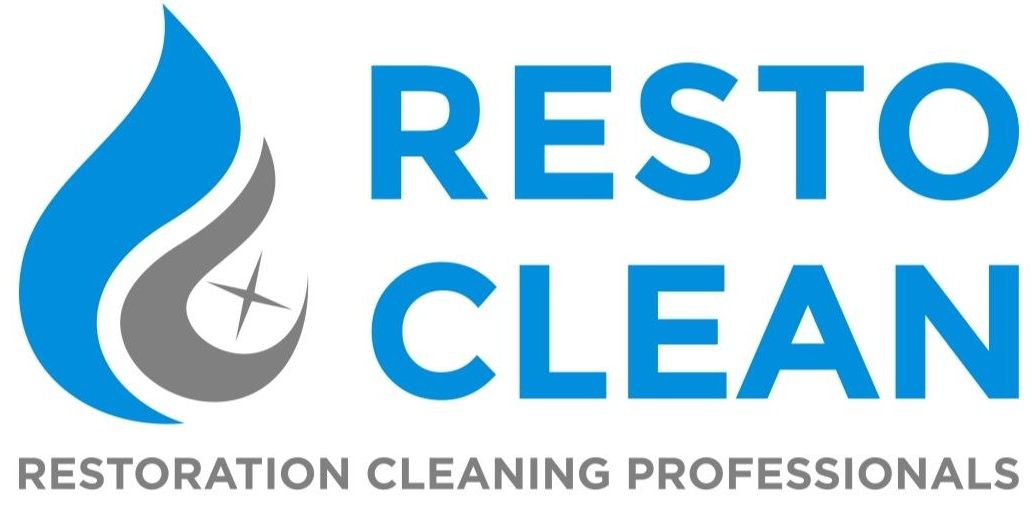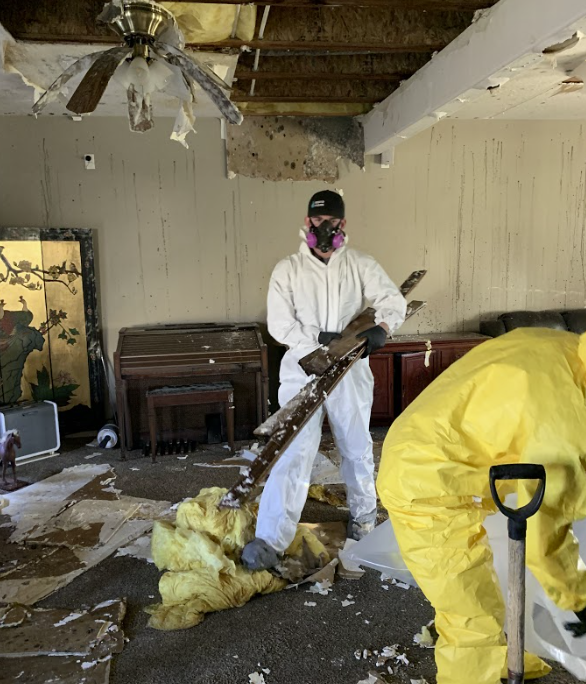Get in touch
555-555-5555
mymail@mailservice.com
Blog

By Daisy Wick
•
January 15, 2024
A fire is a devastating event that can leave behind not only physical damage but also emotional scars. When the flames are finally extinguished, the road to recovery begins. It's essential to understand the importance of professional fire damage restoration and learn about effective ways to prevent such disasters in the first place. Why Professional Fire Damage Restoration Matters When a fire engulfs your home, the aftermath can be overwhelming. The consequences go beyond charred walls and burnt belongings; there are hidden dangers that only professionals can manage effectively: Safety: Fire-damaged structures can be unstable, posing a significant risk to anyone attempting to enter. Professional restoration teams are equipped to assess the structural integrity and ensure it's safe to enter the premises. Smoke and Soot: Smoke and soot damage extends far beyond the visible areas. They can penetrate walls, HVAC systems, and even ductwork. Professionals have the tools and expertise to thoroughly clean and deodorize affected areas. Water Damage: Often, firefighting efforts involve significant water usage. This can lead to water damage, mold growth, and further structural issues. Restoration experts can mitigate water damage and prevent mold infestations. Content Restoration: Fire-damaged personal belongings often carry immense sentimental value. Professional restoration services can salvage, clean, and restore items that might otherwise be lost forever. Insurance Claims: Dealing with insurance after a fire can be complex. Restoration professionals can document the damage, provide accurate estimates, and communicate with insurance adjusters to streamline the claims process. Thorough Cleanup: Fire damage is not limited to what's visible. Professionals ensure that hidden hazards and toxins, like asbestos or lead, are properly managed during the restoration process. Preventing Fire Damage: Safety First While professional fire damage restoration is vital after a fire, preventing a fire in the first place is even more crucial. Here are some key steps to minimize the risk of fire: Install Smoke Alarms: Ensure you have working smoke alarms on every level of your home and inside each bedroom. Regularly check and replace batteries. Fire Extinguishers: Place fire extinguishers in key areas like the kitchen, garage, and near heating appliances. Know how to use them. Electrical Safety: Regularly inspect electrical wiring and appliances for signs of wear or damage. Avoid overloading circuits and extension cords. Safe Cooking Practices: Stay vigilant in the kitchen while cooking. Keep flammable materials away from the stove and turn off appliances when not in use. Heating Safety: Maintain heating systems, fireplaces, and chimneys. Keep space heaters at a safe distance from flammable materials. Candle Caution: Use candles with care, keeping them away from curtains and other flammable objects. Smoking Safety: If you smoke, do so outdoors. Use deep, sturdy ashtrays, and ensure cigarettes are fully extinguished. Escape Plan: Develop and practice a fire escape plan with your family. Ensure all members know multiple ways to exit the home. Fire damage can be catastrophic, but with prevention and professional restoration, you can move forward and rebuild your life after a fire. Safety awareness and preparation are your best allies in reducing the risk of such a devastating event.

By Daisy Wick
•
September 19, 2023
Mold, a common household menace, possesses a dual nature that often catches homeowners off guard. While we're accustomed to recognizing mold by its visible presence on surfaces, it can also remain hidden, presenting a more insidious and challenging problem to detect and mitigate. In this blog, we'll delve into the world of mold, exploring both its visible and invisible manifestations, and the implications they hold for your home and health. Visible Mold: The Obvious Offender Visible mold growth is what most people associate with mold-related issues. It appears as fuzzy patches, discoloration, or dark spots on various surfaces in your home. Common areas where visible mold often thrives include: Bathrooms: Due to constant moisture, bathrooms are hotspots for visible mold. You may notice it on shower tiles, grout, or even the shower curtain. Kitchens: Leaky pipes, food spills, and poor ventilation can lead to mold growth on kitchen surfaces, particularly around sinks and in neglected corners. Basements: Damp and poorly ventilated basements are breeding grounds for visible mold, often found on walls, ceilings, and stored items. Attics: Roof leaks and inadequate insulation can foster mold growth in attics, which can go unnoticed until it spreads extensively. Visible mold is concerning not only for its potential structural damage but also because it can have adverse health effects, triggering allergies and respiratory problems in susceptible individuals. Invisible Mold: The Stealthy Threat The invisible aspect of mold is what makes it especially insidious. Mold releases tiny spores into the air, and these spores are invisible to the naked eye. Even when mold isn't readily apparent on surfaces, these spores can still pose a threat. Here's how invisible mold operates: Airborne Spores: Mold spores are lightweight and can become suspended in the air. Inhaling these spores can lead to health issues, even if you can't see the mold itself. Hidden Colonies: Mold can grow inside walls, behind wallpaper, and beneath flooring. It can also lurk within your HVAC system, spreading spores throughout your home. Unseen Moisture: Invisible mold often accompanies hidden sources of moisture, like leaking pipes or roof leaks. The mold can flourish out of sight, complicating detection. Health Risks of Invisible Mold Exposure Exposure to invisible mold can have health consequences that are just as significant as exposure to visible mold. Common symptoms of mold exposure include: Respiratory problems Allergic reactions Headaches Fatigue Skin irritation Sinus congestion Since you might not be aware of the mold's presence, these health issues can be challenging to link back to mold exposure. Addressing Visible and Invisible Mold Detecting and addressing visible mold is relatively straightforward: Visual Inspection: Regularly inspect your home for visible mold growth. Clean and remove it promptly using appropriate cleaning agents and protective gear. Address Moisture Issues: Fix any leaks or dampness sources contributing to mold growth. Improve Ventilation: Ensure proper ventilation in areas prone to moisture accumulation, like bathrooms and kitchens. Addressing invisible mold is more complex: Professional Assessment: If you suspect hidden mold, consider hiring a professional mold inspector who can use specialized equipment to detect it. Air Quality Testing: Indoor air quality testing can help identify elevated mold spore levels, even if the mold itself remains hidden. Address Hidden Moisture Sources: Fix any underlying moisture issues, which are often the root cause of hidden mold. Conclusion Mold is a multifaceted adversary that can manifest both visibly and invisibly in your home. While visible mold is a clear sign of a problem, the invisible mold is equally harmful, lurking in the shadows and impacting your health without your knowledge. To protect your home and well-being, it's crucial to remain vigilant, addressing both visible and invisible mold issues promptly and thoroughly. Regular maintenance, moisture control, and professional assessment can help you maintain a mold-free and healthy living environment.

By Daisy Wick
•
August 15, 2023
Nestled in the heart of Idaho, Boise offers a unique blend of urban living and natural beauty. However, the city's diverse climate, characterized by cold winters and hot summers, can create conditions conducive to mold growth. Mold is not only unsightly but also poses potential health risks to you and your family. In this comprehensive guide, we'll explore the significance of professional mold removal services in Boise, Idaho, and how they can help you achieve a mold-free and healthier home. Understanding Mold Growth in Boise: Boise's semi-arid climate presents an environment where mold can thrive, especially in areas with excess moisture and poor ventilation. Spaces like basements, bathrooms, and crawl spaces are particularly susceptible. Mold growth not only damages the structural integrity of your property but can also trigger health issues for occupants. Health Implications of Mold Exposure: Mold releases tiny spores into the air, which can cause respiratory problems, allergic reactions, and other health concerns. Individuals with asthma, allergies, or weakened immune systems are especially vulnerable. Given these risks, addressing mold problems promptly is crucial to ensure the well-being of your family. The Role of Professional Mold Removal Services: Attempting a DIY mold removal approach may aggravate the situation. Instead, enlisting the expertise of professional mold removal services in Boise offers a strategic and efficient solution. These specialists possess the knowledge and equipment needed to identify the root cause of mold, contain its spread, and eliminate it effectively. Advantages of Hiring Professionals: Thorough Assessment: Experts conduct a comprehensive assessment to locate hidden mold growth and identify moisture sources. Safe Elimination: Equipped with specialized tools, professionals remove mold without spreading spores, ensuring safe removal. Preventive Measures: Trained technicians offer recommendations to prevent future mold growth by addressing moisture and ventilation issues. Health Protection: Complete mold removal safeguards your family's health by minimizing exposure to harmful spores. Efficiency: Professional services provide quicker and longer-lasting results compared to DIY methods. Steps in Professional Mold Removal: Inspection: Trained professionals evaluate the extent of the mold infestation and identify underlying moisture issues. Containment: Affected areas are isolated to prevent mold spores from spreading during removal. Remediation: Mold is expertly removed from surfaces using appropriate techniques and cleaning agents. Prevention: Professionals offer guidance on addressing moisture problems to prevent future mold growth. Verification: After removal, the area is tested to ensure successful eradication of mold. Maintaining a Mold-Free Boise Home: To prevent mold issues from recurring in your Boise home, consider implementing these practices: Regular Checks: Routinely inspect areas prone to moisture for any signs of mold growth, such as discoloration or musty odors. Ventilation Maintenance: Ensure proper ventilation in bathrooms, kitchens, and other susceptible areas to minimize moisture buildup. Prompt Repairs: Address leaks and water damage immediately to prevent mold-friendly conditions. Control Humidity: Use dehumidifiers to maintain indoor humidity levels between 30-50%. Consistent Cleaning: Keep your home clean and dry, paying extra attention to moisture-prone spots. Conclusion: In the captivating city of Boise, safeguarding your home and family from the adverse effects of mold growth is a priority. With its varied climate, professional mold removal services are vital to maintaining a healthy living environment. By entrusting experienced experts, you can ensure effective mold removal, preventing its recurrence and allowing you to fully enjoy your Boise residence.


